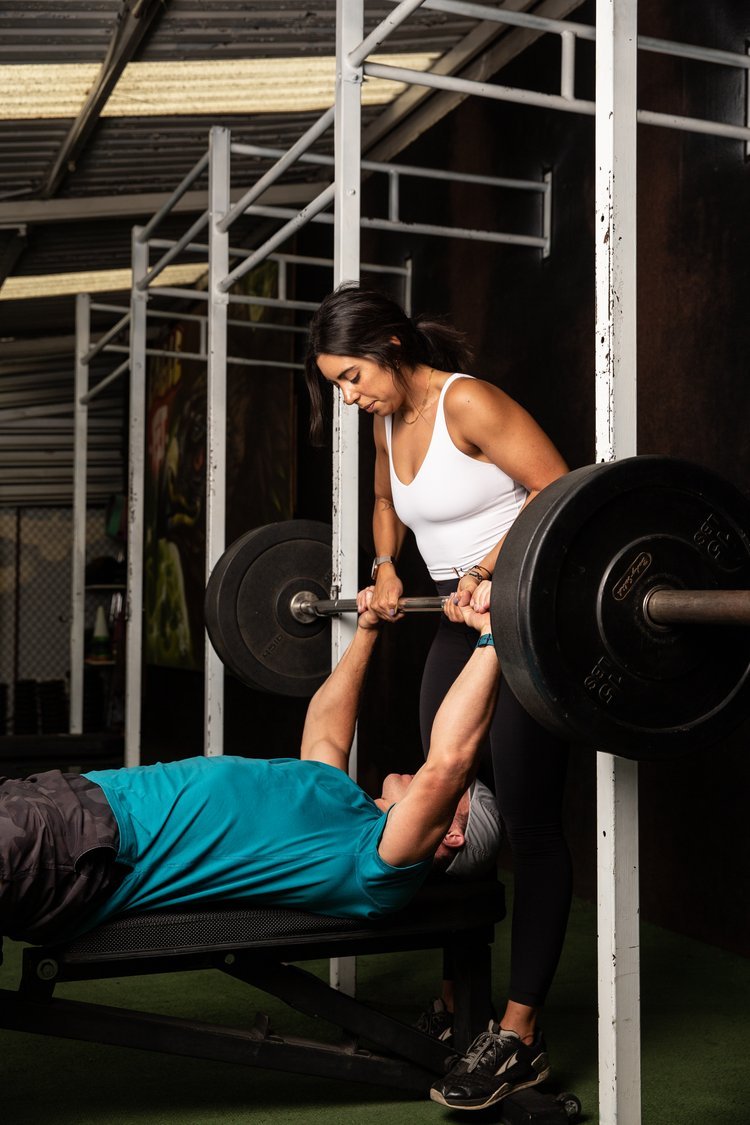BODY WEIGHT VS. MEASUREMENTS: THE BEST WAY TO TRACK FAT LOSS
When we work with clients with body composition goals, we highly encourage them not only to weigh themselves but also to take body measurements. While measuring with a tape measure can feel a little clunky or old-school, the combination of these two data points provides important feedback that can help us clearly understand the trajectory of your fat loss goals and how we can adapt our strategy to ensure progress continues.
Let’s break this down further…
BODY WEIGHT ALONE DOESN’T TELL US ENOUGH
Let’s start with the more familiar metric: body weight.
If your average daily body weight is decreasing over time, you’re losing body tissue.
If your average body weight is increasing, you’re gaining body tissue.
To most accurately track your body weight, weigh yourself daily (or at least multiple times a week), then calculate your average weekly weight to account for natural fluctuations.
However, body weight alone doesn’t tell us if the change is due to fat or muscle! This is where body measurements come in.
THE IMPORTANCE OF BODY MEASUREMENTS
Body measurements are simple yet powerful tools. They help us determine whether specific areas of your body are increasing, decreasing, or staying the same in size.
For example:
If your thigh measurement grows from 23 inches to 24 inches, that area has gained tissue.
If your waist measurement shrinks, it’s a strong indicator of fat loss, as the waist primarily reflects belly fat.
By measuring multiple areas—such as the waist, thighs, arms, and chest—we gain a more complete picture of body composition changes. The most accurate way we can track these changes is to ensure you’re measuring as consistently as possible every 2-4 weeks. This visual gives you an idea of what that can look like:

COMBINING THE DATA TO BETTER UNDERSTAND FAT LOSS
When we combine weight trends with body measurements, we can better understand what’s happening with your body composition. Here is what this data can tell us:
Body weight trends down + waist measurement trends down = overall fat loss.
Body weight trends down + waist measurement stays the same = overall muscle loss.
Body weight trends up + waist measurement stays the same = overall muscle gain.
Body weight stays the same + waist measurement decreases = fat loss and muscle gain happening simultaneously.
If your goal is to change your body composition, these two data points—body weight and measurements—are invaluable. They provide clear, objective feedback that allows you to adjust your strategy in a way that aligns with your goals.
That being said, there can be a lot of mental or emotional baggage that accompanies various body measurements and, at times, it may be better to take time away from these metrics and focus more on the fit of your clothes and, more importantly, working towards a place where you can see these metrics as objective numbers, not data that defines your worth or value.
Kate Lyman Nutrition is a team of nutrition coaches that are committed to providing highly individualized online macro coaching by creating a sustainable approach to your fat loss, health, and performance goals to produce lasting results. We work 1:1 with clients to create real results without compromising your lifestyle. Get started today!

We believe that the best way to achieve your fat loss goals is by working with a coach who creates a plan specific to you - your needs, your preferences, and your goals. A sustainable approach to our nutrition is essential to long-term habits and success. For high-support coaching and guidance, apply for our 1:1 Nutrition Coaching here.




























